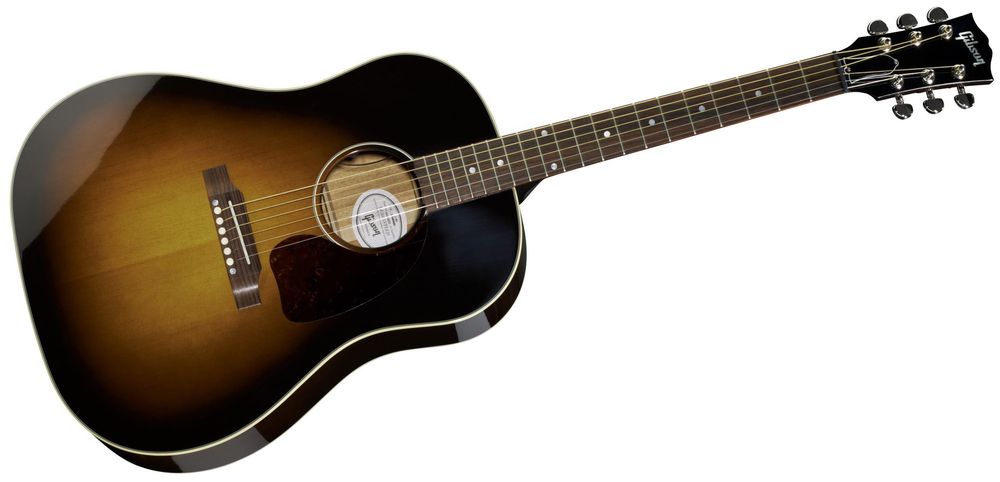8. Dreadnoughts
For 150 years, Martin's flattop acoustic guitars have been among the best in the world. Directly or indirectly, all manufacturers have been influenced by Christian Frederik Martin's designs. This applies to both the body shape and bracing, as well as the decorative inlay work. The Dreadnought is one of Martin's most famous models and was named after a British battleship (the largest in the world at the time). The guitar was designed in 1916 by Frank Henry Martin and Harry Hunt. Thanks to its relatively large body compared to other acoustic models of that time, Dreadnoughts delivered a loud, powerful sound and quickly won the hearts of guitarists. The most famous Martin Dreadnought models are the D-18 and D-28.

Following Martin's great success, Gibson introduced the J-45 in 1934. Note: While the "J" stands for Jumbo, it has nothing to do with the Jumbo body shape described later. In comparison to the Martin Dreadnoughts, which had straight shoulders, the Gibson had rounded shoulders. Whether those rounded shoulders affect the guitar's sound is up for debate. Fact is that the J-45 remains one of Gibson's most popular acoustic guitars to this day.
In 1960, the Hummingbird was added by the prestigious manufacturer as a Dreadnought with straight shoulders.
Today, Dreadnought-acoustic guitars are among the most popular instruments. They're a staple in (almost) every manufacturer's lineup, and players can't get enough of them.
Sound:
Sound-wise, the Dreadnought is a force to be reckoned with. It's got serious power, booming bass, and remarkable clarity. It is the ultimate model for flatpickers, and in music genres like bluegrass, blues, and folk, it's practically a must-have! No worries though, even when you're strumming away, these guitars handle it like pros. The Dreadnought is the true all-rounder of the acoustic world.




